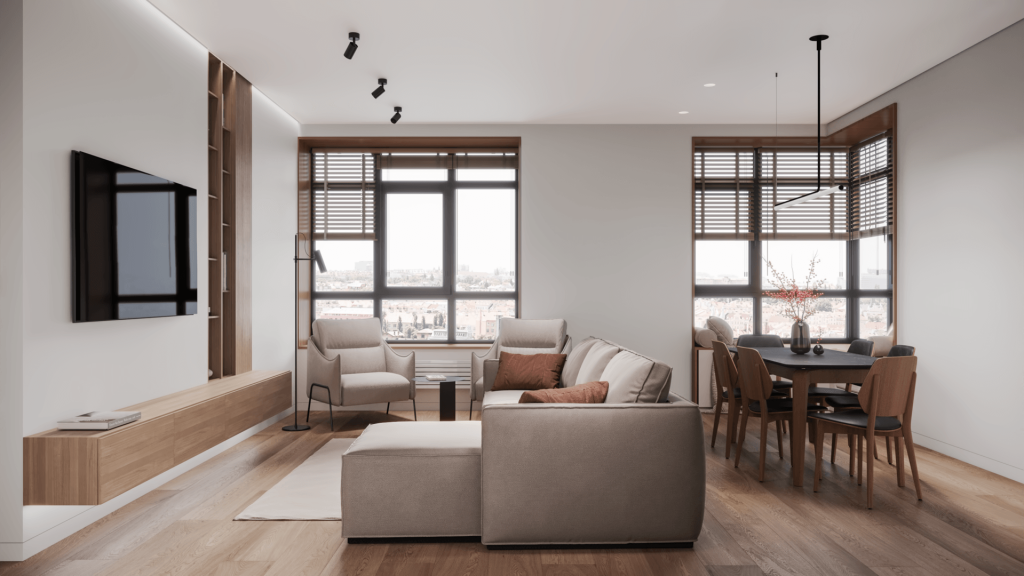Each field comes equipped with its specialized vocabulary, and 3D modeling stands as a prime example. Venturing into 3D modeling offers not only exhilaration and fulfillment but also a learning curve marked by new 3d modeling terms and concepts. By delving into this domain, you’re equipping yourself with a sought-after expertise and a fresh professional lexicon.
3D modeling is the craft of sculpting objects within a three-dimensional space. The vocabulary of this domain, often referred to as 3D modeling terms, is distinctive, weaving together elements from computing, mathematics, and artistic realms. While the depth of this subject can seem vast, beginners needn’t grasp every detail from the outset. Simply familiarizing yourself with a handful of core 3D modeling terms can immensely enhance your conversations and skill set in the field.
The Basics of 3D Modeling: Understanding Key Concepts
Grasping the right terminology, especially 3D modeling terms, is paramount in any business engagement, more so when you’re the client. Demonstrating to the artist that you comprehend the nuances of 3D modeling not only positions you as informed but also paves the way for a more collaborative relationship.
Being proactive in understanding the industry, especially the 3D modeling terms, doesn’t mean you have to master every modeling technique or become proficient in 3D rendering. Instead, a foundational awareness, particularly of the terminology and key 3D modeling terms, sets you ahead. This insight ensures you’re not left in the dark, allowing you to anticipate project timelines and remain proactive.
The essence of effective communication with a 3D artist largely hinges on your familiarity with terms, including the crucial 3D modeling terms, related to three-dimensional objects and techniques. By decoding the artist’s explanations, you gain a deeper insight into the workflow, making it easier to manage expectations and timelines.
Furthermore, equipped with this knowledge, you can streamline discussions, minimizing back-and-forths, and simplifying explanations. This not only expedites the creative process but also empowers you during price negotiations, ensuring value for both your time and investment.
3D Modeling Defined
3D modeling, at its core, is the process of crafting a three-dimensional representation or 3D model of an object using specialized computer-aided software. This creation process transforms simple 2D figures into multi-dimensional ones, breathing life into flat images and making them more real-world authentic.
While 2D modeling represents objects in a flat plane with just height and width, 3D modeling captures the depth, giving a three-dimensional perspective. This added dimension allows for an immersive experience, like taking virtual tours of architectural 3D models, including detailed exterior visualization and 3D interior rendering.
From Hollywood’s dazzling special effects to architectural wonders, 3D models have revolutionized how we visualize and interact with our environment. For instance, architectural 3D models offer virtual tours, enhancing real estate marketing by providing potential buyers with lifelike exterior visualization and intimate 3D interior renderings. In the realm of film, CG renders create captivating effects that mirror real-world lighting and textures.

Unpacking Key 3D Modeling Terms
-
The Mesh
At the heart of every 3D model is the mesh — a network of vertices, edges, and faces that define the shape of an object in 3D space. The intricacy and density of this mesh dictate the model’s level of detail and realism, proving pivotal in rendering sharp and lifelike images.
-
3D Rendering
While 3D modeling is about constructing the object, 3D rendering focuses on producing a two-dimensional image of that object. This visualization process considers lighting, shading, and textures to achieve a realistic representation. Essentially, 3D rendering breathes life into models crafted by product designers, turning them into vibrant images, be it for a CG movie scene or an architectural visualization.
-
Non-Uniform Rational Basis Spline (NURBS)
NURBS is a mathematical model vital in the 3D modeling software landscape. It represents smooth curves and surfaces in three-dimensional space. Thanks to NURBS, artists and engineers can depict intricate designs with unparalleled precision, from sleek car exteriors to delicate jewelry pieces.
-
Rapid Prototyping
Before a final product hits the market, rapid prototyping steps in. Leveraging 3D models, this process allows product designers to create quick real-time mock-ups, making it possible to test, refine, and perfect a design. Whether for a new electronic device or a novel piece of furniture, rapid prototyping is crucial for ensuring the design is both functional and appealing.
The realm of 3D modeling is expansive, merging artistry with technological prowess. By familiarizing oneself with essential 3D modeling terms, the possibilities are virtually endless, from creating captivating movie special effects to visualizing architectural marvels. As more industries recognize the potential of three-dimensional designs, the demand for skilled 3D modelers well-versed in these terms will only continue to surge.
Delving Deeper: Advanced 3D Modeling Concepts
The world of 3D modeling is as intricate as it is fascinating, bridging the chasm between art and technology. With advanced techniques, tools, and technologies, the transformation of a simple idea into a vivid three-dimensional object is a journey filled with precision, creativity, and innovation. This section delves into some of the essential 3D modeling terms, techniques, and tools in this domain.
Essential Techniques and Tools in 3D Modeling
-
Ambient Lighting
Ambient lighting is a crucial element in achieving the heightened realism and depth that set apart an average digital representation from a compelling one. Unlike direct lighting that comes from a single source, ambient light envelops the entire scene uniformly. Its role in 3D modeling is to mimic the global illumination we find in the real world, filling in shadows and ensuring no part of the scene is completely dark. This modeling technique is vital in improving rendering, providing a soft light that gives models a more natural and realistic appearance, often used in conjunction with techniques like physically based rendering and global illumination.
-
Beveling
In the real world, objects seldom have perfectly sharp edges. Beveling, in 3D modeling, refers to the technique of creating a smooth surface by adding a transitional surface between two adjacent ones. It softens the intersections of three or more edges, making the object appear more realistic and worn, mimicking real-world objects. The technique is particularly valuable in computer-aided design, where the aim is often to replicate real-world conditions as accurately as possible.
-
Texture Mapping
Texture mapping involves placing a digital representation (like an image or pattern) onto the surface of a three-dimensional model. This modeling technique significantly boosts the visual appeal of the model, offering it depth, detail, and a semblance of realism. Tools like normal map and displacement map further refine the process, allowing for even minute details to be rendered. From the wrinkles on a leather sofa in a video game to the intricate patterns on medical imaging, texture mapping finds diverse applications.
-
3D Sculpturing
3D sculpturing is akin to molding clay in the real world but is executed in the digital realm. Instead of building a model through traditional means like point clouds or mesh vertices, 3D sculpting allows artists to “carve” their designs. Tools specific to this technique let modelers push, pull, twist, and smooth the digital clay until the desired shape is achieved. Some sophisticated tools even mimic real-world sculpting tools. One significant advantage of 3D sculpturing is its ability to quickly create detailed and complex shapes, often used in tandem with normal maps to capture details without adding geometric complexity.
In wrapping up, these advanced concepts underscore the depth and breadth of 3D modeling. While the tools and techniques evolve, the core principle remains consistent: to create a detailed and realistic digital reflection of our world. With tools like ambient lighting and texture mapping or techniques like beveling and sculpturing, 3D modeling is continually pushing the boundaries of digital art, providing an ever-expanding playground for creators to explore, innovate, and reimagine.
3D Modeling Specializations: Understanding Different Approaches
In the expansive universe of 3D modeling, multiple approaches allow designers to breathe life into their ideas, adding the so-called third dimension to what were initially flat concepts. Each approach carries a unique method and purpose, tailored for specific outcomes. This section elucidates three prominent 3D modeling specializations, demystifying the nuances that each brings to the table.
Approaches to Creating 3D Models
-
Polygonal Modeling
At the heart of many 3D models lies a structure made up of tiny polygons, often triangular polygons, forming a polygonal mesh. Polygonal modeling, as the name suggests, involves crafting 3D models by manipulating these polygons in three-dimensional space. Each polygon in the mesh, connected by edges and vertices, defines a part of the model’s surface. This approach is particularly beneficial in scenarios demanding real-time graphics, such as video games and virtual reality, given its 3d modeling software performance advantages. When combined with techniques like bump map or ambient occlusion, polygonal models can achieve more detail, appearing incredibly close to their real-life counterparts. Furthermore, their compatibility with various file formats makes them suitable for CG animation, where scanline rendering requires efficiency at project speed.
-
NURMS Modeling
NURMS (Non-uniform rational mesh smooth) modeling is all about creating smooth surfaces. Unlike the often rigid surfaces of polygonal modeling, NURMS modeling is a mathematical model focused on delivering sleek and continuous shapes. This approach is used when the final model needs to avoid sharp edges, like in the case of organic subjects or when portraying transparent materials in ray tracing. By strategically combining shapes and leveraging ambient lighting, designers can achieve a polished, refined look that mirrors objects in real life, albeit with the flexibility to manipulate the image for artistic or functional purposes.
-
CAD (Computer Aided Drawing)
When transitioning from 2D designs to a three-dimensional representation, CAD is the go-to tool for many professionals, particularly in fields like architecture and engineering. Unlike the other elements primarily used in entertainment or art, CAD is rooted in precision and functionality. The process involves converting 2D blueprints into 3D structures, viewing them from different angles, and iterating the design in a virtual environment. Computer-aided drawing is not just about aesthetics; it’s about ensuring that the final product is viable in the real world. CAD systems also excel in modeling objects with certain material properties, enabling realistic simulations of how the final object would behave under various conditions.
The world of 3D modeling, enriched by its unique 3D modeling terms, is as vast as it is intricate. Whether one is shaping the details of a character for a video game using polygonal modeling, crafting smooth curves for a CG animation with NURMS, or bringing architectural marvels to life via CAD, the third dimension offers a realm of possibilities. By understanding the subtleties of these different approaches and the associated 3D modeling terms, designers can better choose the right tools and techniques for their projects, ensuring their visions are translated accurately and impressively into the final product.
Conclusion
Understanding the 3D modeling terms associated with 3D rendering provides clients with numerous advantages. This foundational knowledge not only gives you a clearer picture of what your chosen artist is accomplishing but also empowers you to visualize your ideas within a three-dimensional object setting.
Furthermore, being well-versed in 3D modeling terms ensures your interactions are clear, direct, and efficient.
Here at Fortes Vision, we prioritize educating our clients on 3D modeling and its associated techniques. As the world’s premier hub of professionals, we view our clients as family, ensuring everything you embark on here is shaped by your vision. Our commitment goes beyond just delivering; we aim to enlighten you on 3D modeling, offering a comprehensive understanding that enables you to make informed, cost-effective decisions for all your 3D rendering and real-world objects creation needs.
Your Journey | to Marketing Renders | That Bring Out | The Best in Your | Project
Read Our Whitepaper





